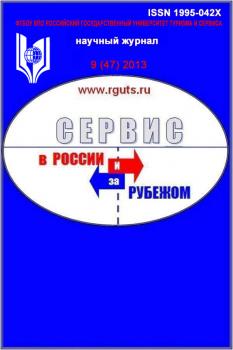This article describes the process of preservation and beautification of military cemeteries and memorials of World War I on the territory of Western Belarus in 1921-1939. Aspects of cooperation between state bodies and public organizations are discussed. The author relies on the legislative acts and periodicals of that period, as well as modern literature and Web-sites of specialized public organizations. The article considers the main legislative acts that manage activities for protection and arrangement of sites of memory of World War I. The questions of the relation of the different people to memory of the victims of Great World are raised; examples of particular actions for its preservation on the territory of the Western Belarus in 1921-1939 are given. The author determines the role of World War I in the history of Belarus and its heritage. The article contains information about key battles on Eastern front, and also about features of burial of soldiers of the Imperial Russian Army. The special attention is paid to joint military burials where Russian and German soldiers were buried and which are symbols of posthumous reconciliation of hostile sides. Various ways integration of sites of memory of Great War´s to modern military patriotic routes, which are urged to inform new generations about this grandiose conflict of the XX century, are considered.
World War I, military cemeteries, heritage protection, West Belarus in 1921-1939
1. Bogdanov V.A. Po sledam Pervoy mirovoy voyny v Belarusi. Smorgonskiy rayon. - Minsk: Gol´fstrim, 2007. - 63 s.
2. Liguta V.N. U Smorgoni, pod znakom Svyatogo Georgiya. - Minsk: V. Khursik, 2010. - 249 s.
3. Sharkov A.V. Voinskie zakhoroneniya Pervoy mirovoy voyny v Belarusi = Soldatengraberanlagen aus dem Ersten Weltkrieg in Belarus. - Minsk: NARB, 2010. - 188 s.
4. Bogdanov V.A. Voinskie zakhoroneniya Pervoy mirovoy voyny na territorii Belarusi: sovremennoe sostoyanie / Belarus´ u gady Pershay susvetnay vayny. Smargonshchyna: tragedyya, geraіzm, pamyats´. Materyyaly Mіzhnarodnay navukova-praktychnay kanferentsyі. - Mіnsk: Chatyry chvertsі, 2009. - S. 666-678.
5. Vabishchevich A.M. Stan і zakhavanne voіnskіkh pakhavannyaў Pershay susvetnay vayny ў Zakhodnyay Belarusі ў 1921-1939 gg. / Belaruski gistarychny chasopis. - 2014. - № 9. - S. 15-22.
6. Nenadavets A.M. Saldatskіya pakhavannі na Pіnshchyne peryyadu Pershay susvetnay vayny. Sotsial´no-ekonomicheskoe i istoriko-kul´turnoe razvitie Polesskogo regiona v KhKhI veke: materialy mezhdunar. nauch.-prakt. konf. - Pinsk, 2006. - S. 210-212.
7. Lewkowska A., Lewkowski J., Walczak W. Zabytkowe cmentarze na kresach wschodnich Drugiej Rzeczypospolitej: Województwo Poleskie na obszarze Republiki Białoruśkowska. Warszawa, 2000. S. 208.
8. Wysocki A., Zapomniane groby na kresowych pobojowiskah Polski / Ilustracja Polska. - 1932. - 30 października.
9. Marchuk N.G. Zakhoroneniya Pervoy mirovoy voyny. Turisticheskiy Kobrin. Elektronnyy resurs: URL: http://ikobrin.ru/kobrin-tvmarchuk12.php (data obrashcheniya: 4.12.2015).
10. Narodnyy soyuz Germanii po ukhodu za voennymi mogilami. Kratkaya informatsiya.. Volksbund Deutsche Kriegsgräberfürsorge e.V. Elektronnyy resurs: URL: http://www.volksbund.de/ru/volksbund.html (data obrashcheniya: 4.12.2015).
11. Joanna Legg. Building the Cemeteries after the First World War. Design and Construction.. A Guide to WW1 Battlefields and History of the First World War. Elektronnyy resurs: URL: http://www.greatwar.co.uk/organizations/volksbund-vdk.htm (data obrashcheniya: 4.12.2015).





